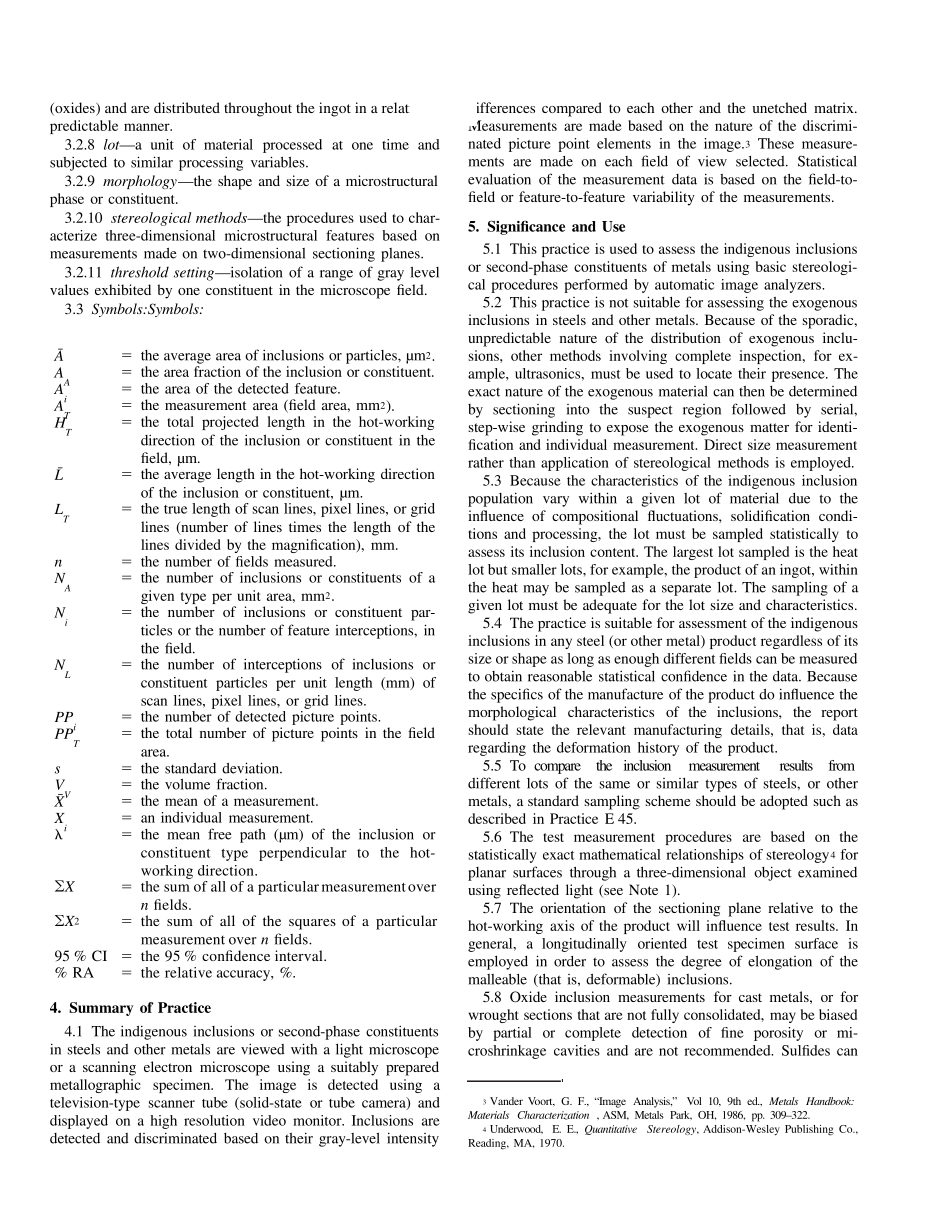(oxides) and are distributed throughout the ingot in a relativelypredictable manner.3.2.8 lot—a unit of material processed at one time andsubjected to similar processing variables.3.2.9 morphology—the shape and size of a microstructuralphase or constituent.3.2.10 stereological methods—the procedures used to char-acterize three-dimensional microstructural features based onmeasurements made on two-dimensional sectioning planes.3.2.11 threshold setting—isolation of a range of gray levelvalues exhibited by one constituent in the microscope field.3.3 Symbols:Symbols:A¯5 the average area of inclusions or particles, µm2.AA5 the area fraction of the inclusion or constituent.Ai5 the area of the detected feature.AT5 the measurement area (field area, mm2).HT5 the total projected length in the hot-workingdirection of the inclusion or constituent in thefield, µm.L¯5 the average length in the hot-working directionof the inclusion or constituent, µm.LT5 the true length of scan lines, pixel lines, or gridlines (number of lines times the length of thelines divided by the magnification), mm.n5 the number of fields measured.NA5 the number of inclusions or constituents of agiven type per unit area, mm2.Ni5 the number of inclusions or constituent par-ticles or the number of feature interceptions, inthe field.NL5 the number of interceptions of inclusions orconstituent particles per unit length (mm) ofscan lines, pixel lines, or grid lines.PPi5 the number of detected picture points.PPT5 the total number of picture points in the fieldarea.s5 the standard deviation.VV5 the volume fraction.X¯5 the mean of a measurement.Xi5 an individual measurement.l5 the mean free path (µm) of the inclusion orconstituent type perpendicular to the hot-working ...


